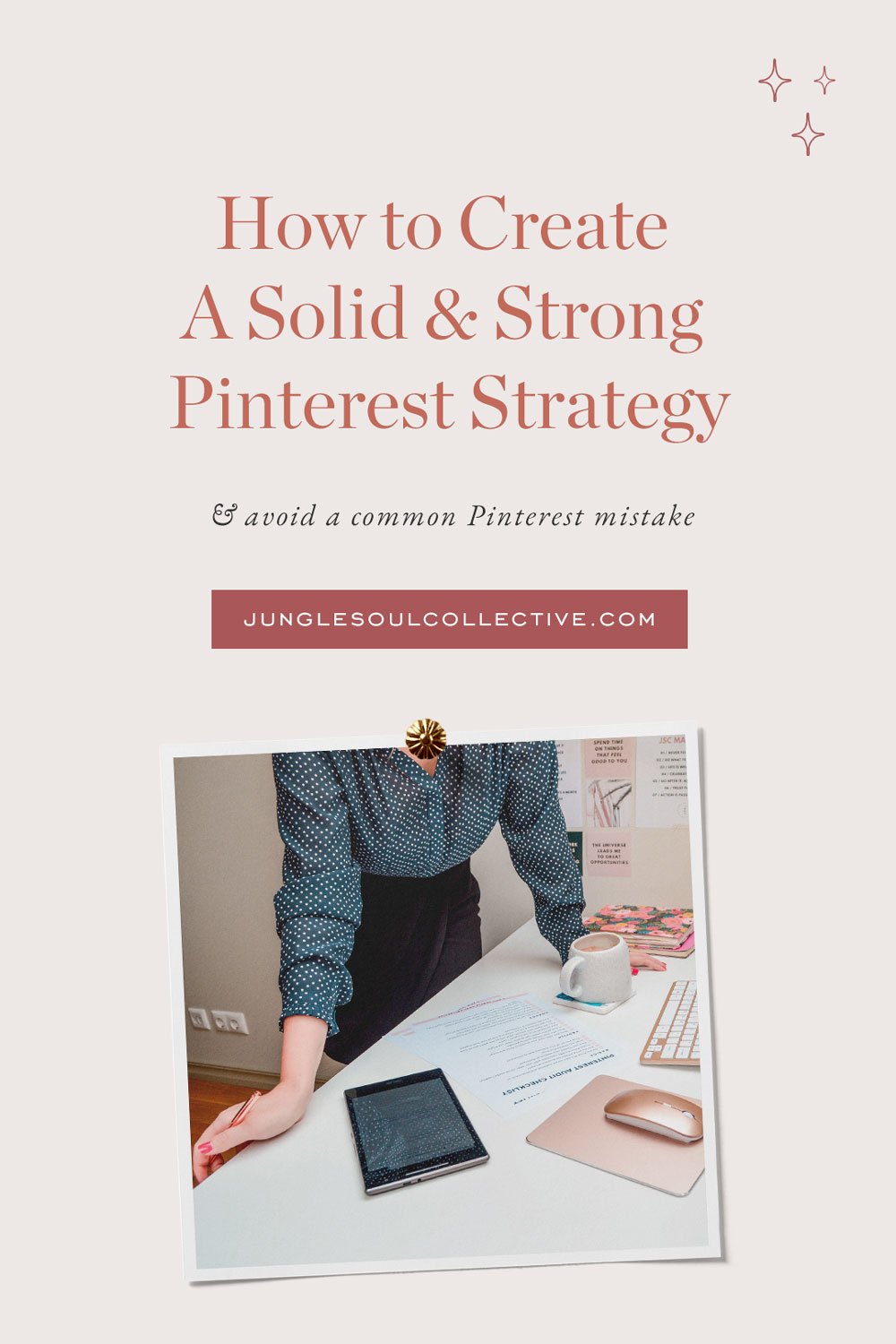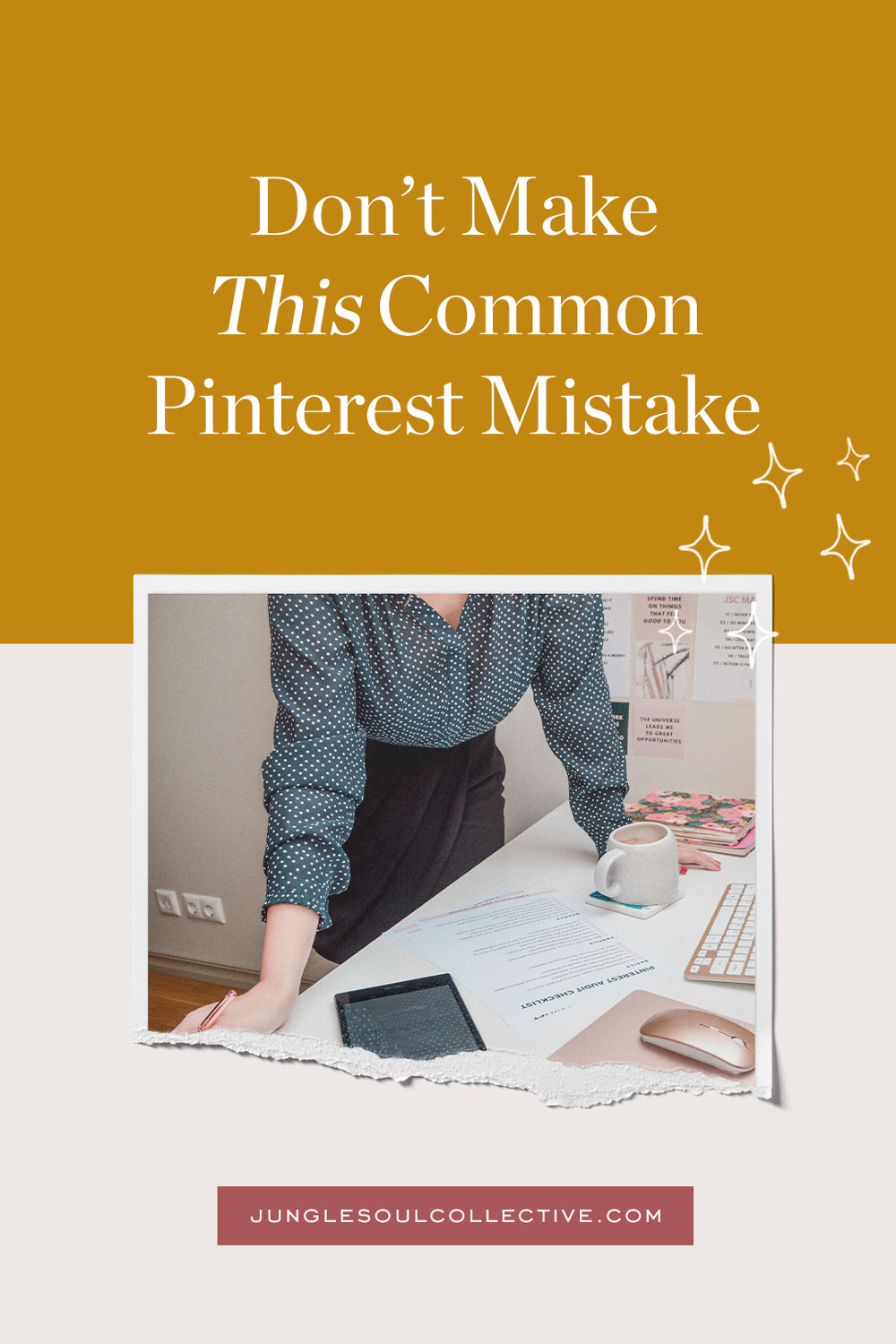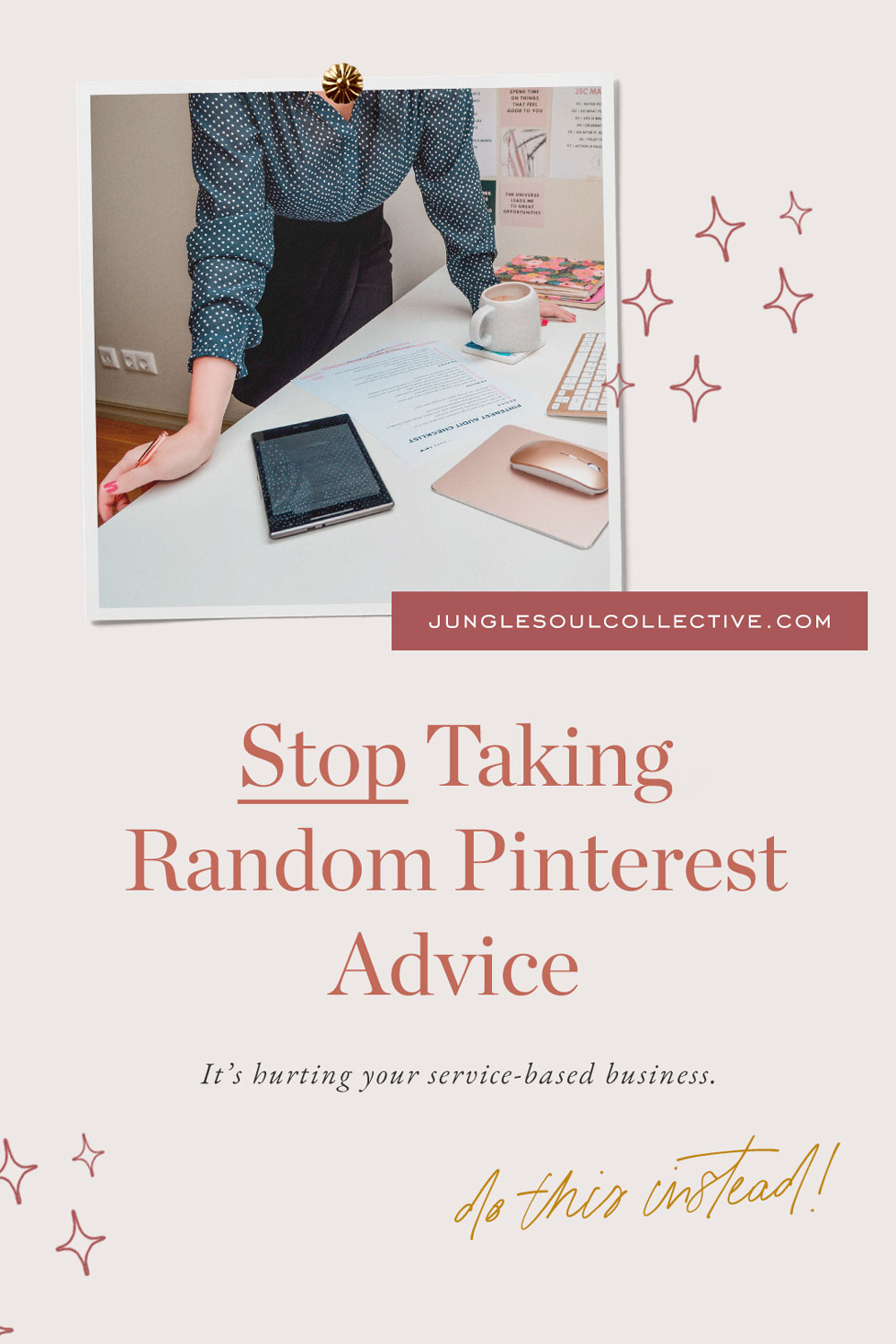If you’re new to Pinterest, you’ve likely been reading a bunch of blog posts about Pinterest marketing, pulling different strategies and ideas from each one and putting them all together to create your own (hopefully) successful Pinterest strategy.
It’s the ultimate Pinterest strategy mistake new pinners make.
“It worked for her, so it must be good stuff”, you think, and apply the greatest hits of other people’s Pinterest tactics to your own account.
You expect your account to grow and flourish. You expect traffic, subscribers, leads, clients, ALL THE GLORY. This is it, Pinterest is going to help you grow your service-based business.
But you get crickets.
You’re puzzled and look up more blog posts for help, making even more changes based on other people’s advice. Crickets intensify.

Don’t Make This Common Pinterest Mistake
#1 Pinterest Strategy Mistake to Avoid: The Spaghetti Strategy
I get it, we’ve all done this.
We’re conditioned to take advice from the internet. It doesn’t matter what we need help with, someone on the internet has already experienced it, written about it, and answered your question.
There’s a problem, though.
Pinterest marketing is one of those things you can’t get right just by doing what someone with a blog says you should do.
The process I described – reading blog posts, cherry-picking tactics, and ideas, implementing them on your Pinterest business account, and then wondering why it didn’t work – is what I call the spaghetti strategy.
The spaghetti strategy is reading on the internet about how to use Pinterest to market your business and applying that information to your own account in hopes it will help get it off to a good start.
It’s the biggest Pinterest strategy mistake creatives and coaches make at the beginning of their Pinterest journey.
Taking other people’s Pinterest advice on a whim never works because they can’t give you a proper, solid Pinterest strategy that works for your business.
They don’t know your business!
It’s literally throwing spaghetti at the wall, crossing your fingers, and hoping something sticks.
There’s no plan, consistency, or common theme (besides the fact that you’re doing it in good faith hoping it will make you more successful).
The spaghetti strategy is doing things on Pinterest because you think you need to do them, not because you know it’s what’s going to move you forward.
Why You Need to Create Your Own Pinterest Strategy
You might think that combining the strategies that have worked for other people would be a great way to create an ultimate Pinterest marketing strategy for yourself, but that’s not true.
All you’re doing is committing the ultimate Pinterest strategy mistake.
Pinterest advice is not tailored to you
Pinterest marketing strategy and tactics depend entirely on your business and your target audience. There is no one size fits all solution I (or anyone else for that matter) can share with you right here and right now, only general guidelines that work for a service-based business.
The main problem with hacking strategies together is that no one else on the internet knows your business as well as you, therefore can’t give specific advice that works for you without consulting you first.
Random strangers, bloggers, and content creators don’t know anything about your business, your vision and goals, your target audience, and how you help them.
How could they ever give you a solid strategy in a blog post?
They are writing from their own perspective. Their strategy worked for whatever goal they were trying to achieve in their business and that certainly does not mean you’ll have the same success.
You need to create your own Pinterest strategy from scratch or enlist the help of a professional.
The simple fix: Strategy vs plan
When it comes to Pinterest, it’s important to understand the difference between a strategy and a plan.
Although for clarity purposes I’ve used Pinterest strategy and tactics loosely and interchangeably in this post, the two are actually the two different sides of a coin.
In very simple terms, your Pinterest strategy is the framework that helps you decide how to use Pinterest. It clarifies the three things (your goals, target market, and SEO strategy) that are needed to make every decision on Pinterest and keeps you from running in too many different directions. Strategy is the very first thing you figure out when getting started on Pinterest because it keeps you on track.
Your marketing plan, on the other hand, is the actions and tactics you’ll implement on Pinterest to reach your audience and achieve your goals.
What boards to create, how much to pin, when to pin, which group boards to join, what to pin, how you design your graphics, and so on – that’s all decisions you’ll make based on your strategy.
Both your strategy and marketing plan need to be tailored to your business which is why you can’t combine other people’s ideas and expect a good run.
When you’re ready to get started on Pinterest, start by taking the time to write down the three elements of your Pinterest strategy.
1. Identify your goal
Why do I want to use Pinterest for my business? What specific goal do I want to achieve with Pinterest?
Make sure your goals are specific and measurable. For example, instead of “I want to grow my business” (in what way?), write “I want to double my email list in a year”.
2. Identify your ideal client
Who is my ideal client? What problems does she have? Which problem can I solve? Am I creating content that helps her solve that problem?
You need to know who you’re talking to so you can improve your marketing message and reach the right people. It also helps to write down who is definitely not your ideal client.
3. Identify the keywords she uses to search for help
Your ideal client is on Pinterest searching for a solution to her big problem. What phrases and keywords does she use to find help? Write it all down. This will form the basis of your Pinterest SEO and keyword research.
Before you go, pin these tips for later!
















